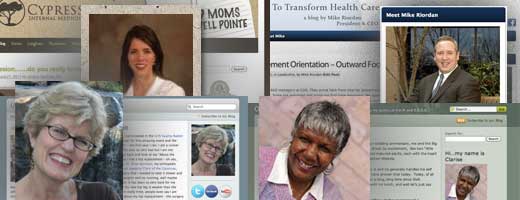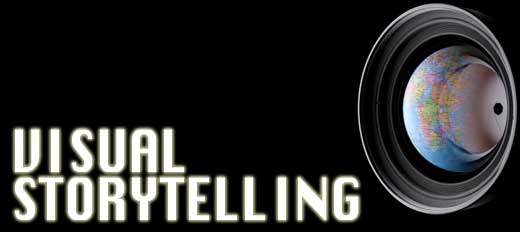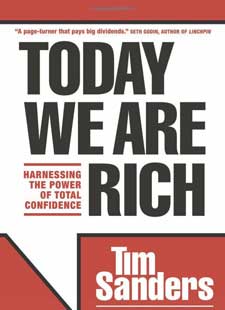For the last year and a half, I have been working with Greenville Hospital System (GHS) integrating the idea of blogging inside this major medical system. First off, let me just say there is not a perfect strategy (IMHO) for something that is such a subjective initiative to integrate.
Before I began presenting the idea of finding people inside the organization to blog at GHS, I spent a good bit of time talking and consulting with GHS and their Marketing/PR Department and also a long-time friend who runs all of the New Media Initiatives at Clemson University, Jacob Barker. We found many similarities between a large hospital system and a major, state supported university. First, their are many different departments/colleges at a University that match the many departments and service lines of a major health system.
The first thing Jacob and I agreed upon is that it is more than just a formulaic strategy to implement across an organization, it is all about engagement and learning from each other. We knew it was best engage a Social Media Advisory Committee or a Social Media Team. GHS had already established this team.
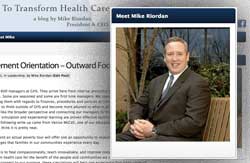
So this is where we started. I worked closely with the leadership in the Marketing Department along with Mike and his Chief of Staff to create a frame work for which he would write. Before we started, we had to really think about the mission behind the blog, what he was interested in writing about, and how often he was willing to commit to this social outlet. It was great…he began writing immediately. Over the last year, he has written close to two blog posts a week, sometimes more!
We set-up a streamlined approach to the technology utilizing WordPress which allowed him to write from his iPad with the WordPress App. I work with him consistently to clean-up the formatting and also integrate presentations and video into the blog posts. I wanted him to focus on his writing and I take care of the technology issues. He writes everything! Since we started the blog, over half of his traffic comes from the employees of GHS. His ability to write passionately as a leader translates to the employees and the local community of GHS.
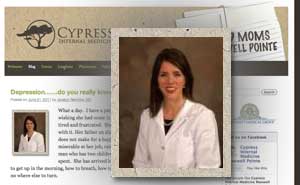
These experiences guided us and we learned a few things as we began engaging other blog opportunities.
1. You have to find the internal ambassadors who naturally fit the blogging paradigm. These people naturally write in a social voice and genuinely want to connect with others.
2. Not all blogs have to carry the corporate look of the organization. Mike Riordan’s blog represesents GHS and the best interests of his leaderships position, so we gave it more of a corporate look. It matches the style of GHS’s color schemes and branding. BUT…there has been research presented that consumers find blogs that present a corporate look seem less credible and are not willing to engage in the conversation…that is why the “Our Ham and Eggs” Blog is a little more personalized.
3. You have to have a mission from the beginning that focuses the writing. As time moves along (and you have installed analytics to track the traffic), you can evolve the writing based on audience response, evolution of the organization’s mission, and topical public issues that bridge the audience to the organizations message.
4. You need to track success. We have found installing great analytics packages like Google Analytics and GetClicky Analytics allows you to compare traffic results with blog posts and campaigns…plus, GetClick is real time.
5. You have to share your blog using social outlets and other marketing pieces. We like to use our Twitter and Facebook presence to share blog posts with the consumer, but we also share blog posts using internal communication tools for employees. This was done using internal newsletters and intranets…which was vital during the passage of healthcare reform related issues. Also…put the blog URL on brochures and other physical media for people to see. And last, be sure to advertise the blog on the home page of your website.
6. If you decide to allow people to comment on your blog, you have to be willing to respond. These are people who are reaching out and want to engage in a conversation. Take advantage of this opportunity.
7. Write passionately and straight from the heart. People want to read stories and know your honest thoughts and opinions. This is an opportunity to take a stand on issues, ideas, and topical items relevant to your audiences and your mission. They can go to your website for corporate marketing generated content, but in the blogs…you have to write passionately. As Robbin Phillips of Brains On Fire says…”It’s people stupid.”
8. Do not be afraid to get personal. Some of the biggest traffic came when blog posts were written that allowed the audience to learn more about people’s personal side. Yes, you have to decide what your boundaries may be…but allowing people to see you as a person and not a position gives them a chance to relate to you.
9. Use pictures, video, and any other visuals to reinforce what you are writing about. People like pictures and it allows them to see how you smile or relate to a topic. Also…video gives a third dimension to the topic.
10. Transparent writing…what do I mean? Well Mike Riordan writes his own blog content and so do each of the bloggers. These posts come straight from the horses mouth, not from a series of over-site committees. It is all genuine content.
I am extremely fortunate to work with a smart staff at GHS, their smart direction and innovative thinking has allowed me to try new things with them. They are fun!
Final thought…Blogging is all about Telling Stories! Nuff Said.

